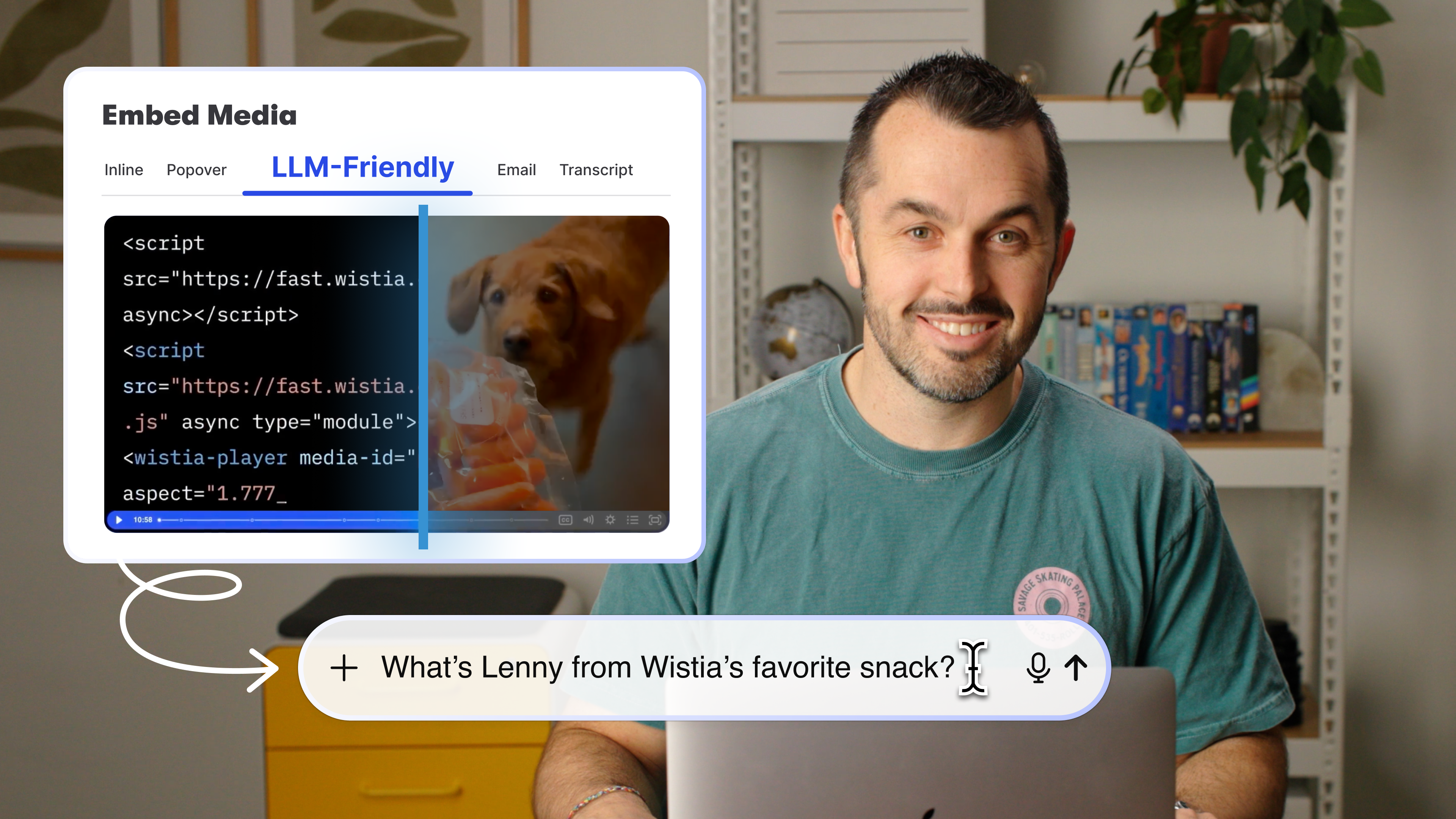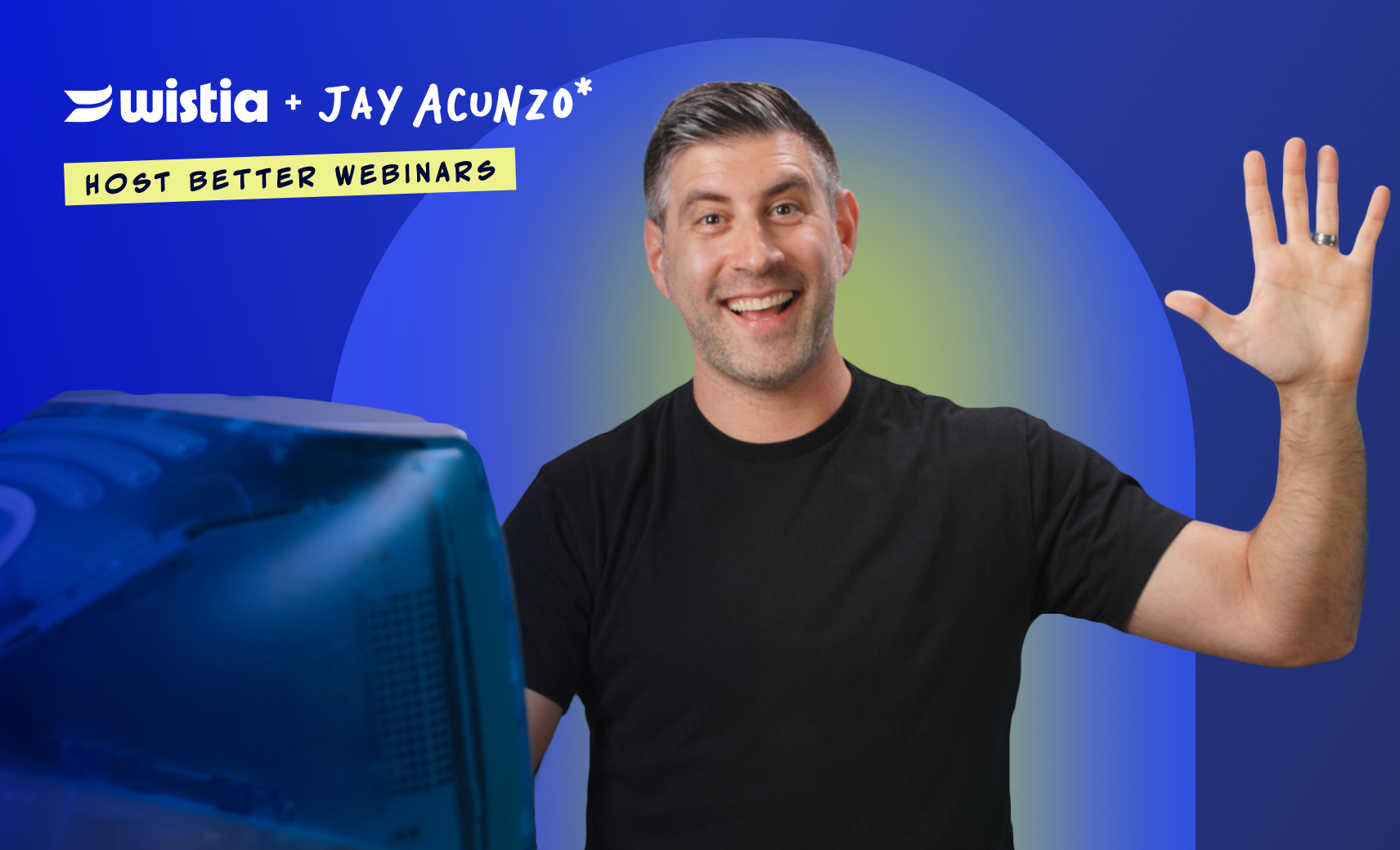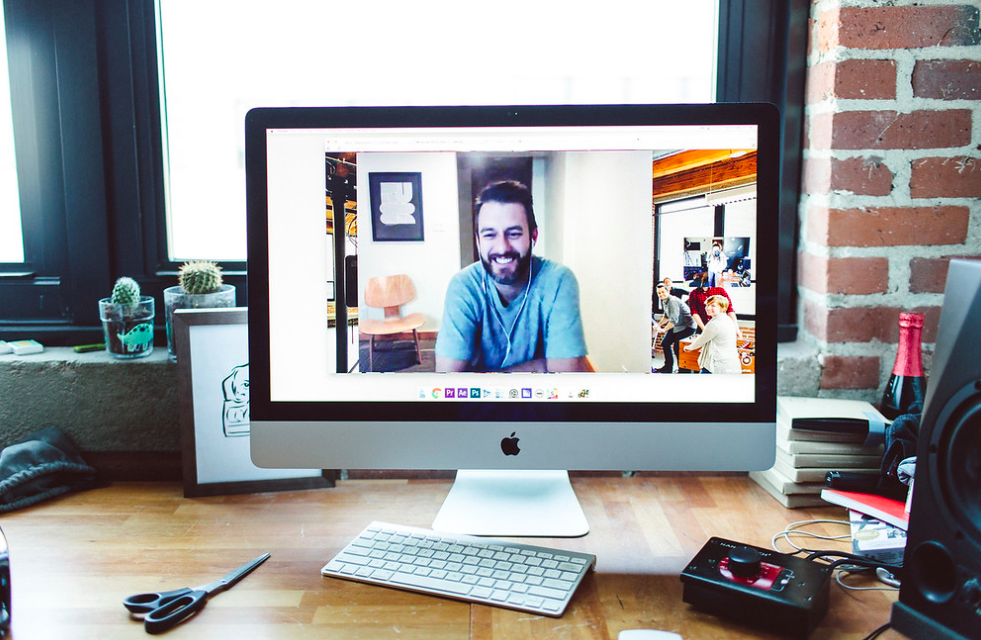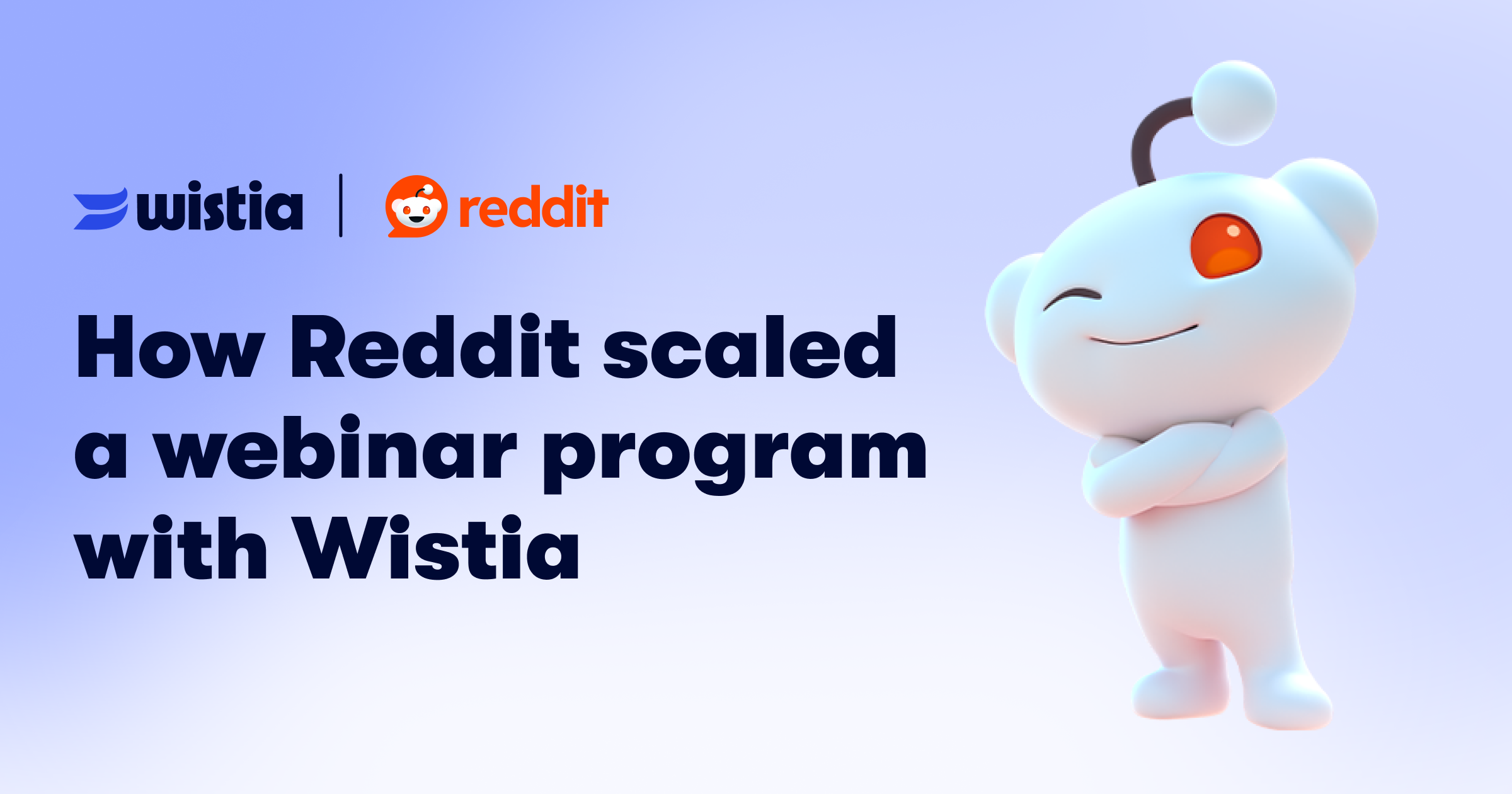9 Tips for Repurposing Videos for Social Media
Turn your video library into a steady stream of engaging social content.
August 11, 2025
Topic tags
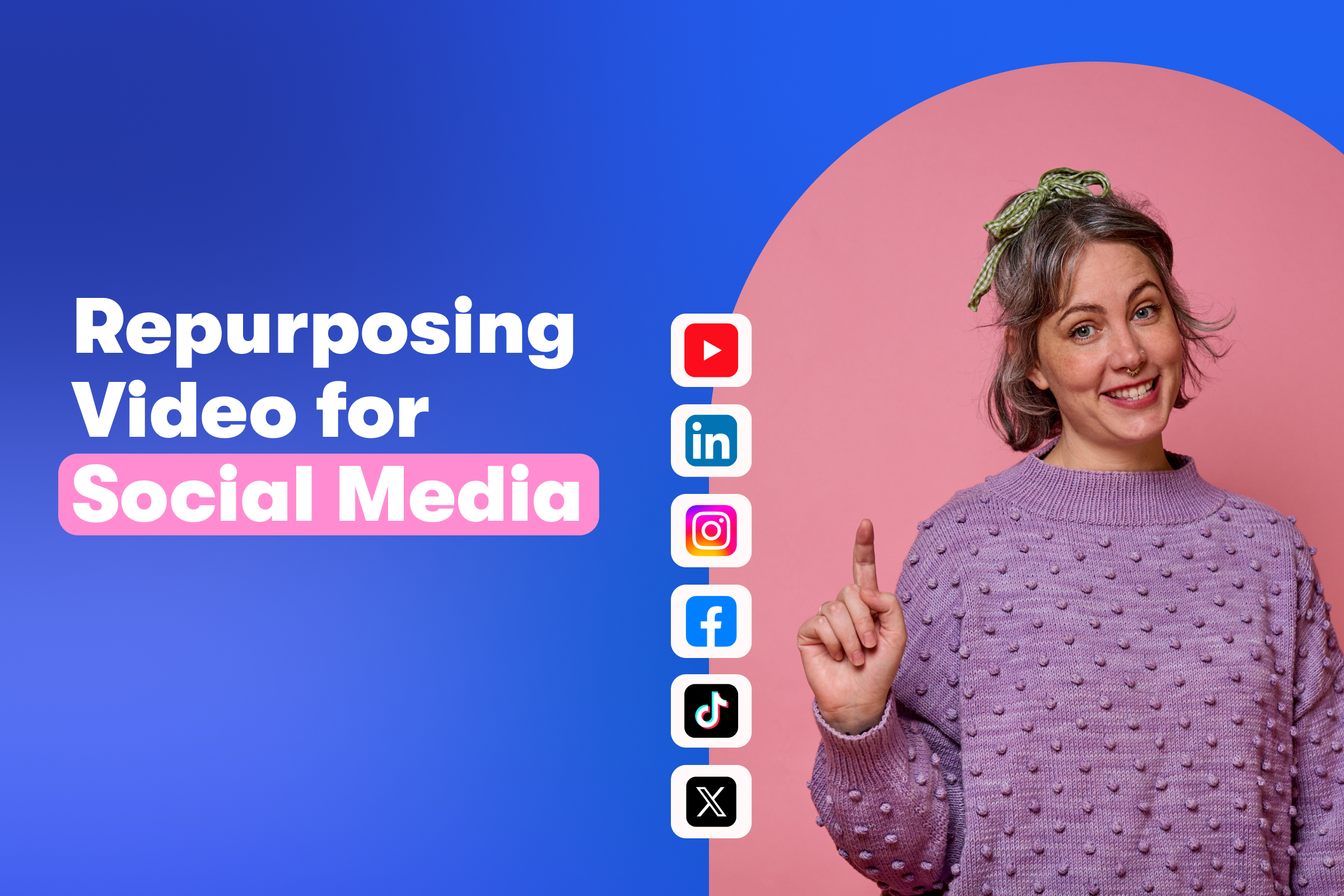
Ever wonder how some brands always have the perfect videos on every social feed? The secret’s not more time or budget. It’s just smart repurposing.
They take their existing videos and trim them, pull shareable clips, and create other video assets tailored for each social platform. And here’s the good news: It’s easier than it sounds. It just takes a little research, a little editing magic, and voila — your videos can be everywhere, too!
We’ve rounded up all the practical tips you need to get started.
1. Pick the right video editor
The editor you use makes a big difference in how much time and effort it takes to repurpose your videos. You want one that’s easy to use and comes with all the tools and integrations to:
- Edit, resize, and caption your videos
- Quickly find and pull shareable clips from your videos
- Host all your social videos and clips
- Upload videos and clips directly to each social platform
Wistia fits the bill. You can do all of the above (and some more) in one place without downloading any files or juggling any tools. That means less time creating and managing social videos and more time getting them in front of your audience.
2. Know your audience
You can repurpose any video in your library for social, but what really matters is the content you end up with. Each platform has its own audience that expects different types of content. The key is to match your message to what resonates most in each space.
YouTube
Folks who frequent YouTube expect to be entertained or educated, so these types of videos would work well there:
- Webinar recordings
- Video podcasts
- Product demos and tutorials
- Event highlight reels
- Behind-the-scenes videos
LinkedIn is where professionals share their work, celebrate wins, and look for fresh insights from thought leaders. It’s a great spot for thoughtful and informative content. Try sharing:
- Short product demos
- Insightful clips from webinars or podcasts
- Customer success stories
- Product launch announcements
- Big brand moments
Most people go on Instagram to be entertained or to discover new content. B2B brands see strong results with:
- Product tutorials
- Behind-the-scenes content
- Teaser trailers
Facebook is where people go to connect with friends, brands, and communities. Plus, it’s the second most popular platform for product discovery. Give your Facebook followers videos that spark their sense of belonging and highlight your brand and products. Some good examples include:
- Company culture videos
- Customer success stories
- Tutorials or how-to guides
- Product launch announcements
- Big brand moments
TikTok
TikTok is a go-to spot for folks who want to discover trends, be entertained, and explore new brands and products. That’s why creative, attention-grabbing short videos shine here. Try sharing:
- Insightful quotes from interviews
- Engaging moments from webinars or podcasts
- Product demos
X (formerly known as Twitter)
People go to X to discover new and interesting content, so it’s a good place to share:
- Teasers for content hosted on your website
- Short promos for upcoming webinars or events
- Grand opening announcements
3. Grab viewers' attention immediately
People have to watch your video for two to three seconds before most platforms consider it a view, but you have even less time than that to pique their interest.
According to our 2025 State of Video Report, short-form video engagement rates dropped the most in four years. Viewers don’t have shorter attention spans; they have higher expectations. They won’t wait around for messages that take too long to land.
Use bold visuals, a clear hook, or start mid-action to draw people in from the first frame. For social platforms that allow thumbnails, choose a still image that’s vibrant, relevant, and visually compelling.
4. Resize your videos
When your video fills the frame and feels native to the social platform, people are more likely to stop scrolling and watch it. Here are the best aspect ratios for each platform:
| Platform | Aspect ratio |
|---|---|
| 16:9 or 9:16 (video tab) | |
| YouTube | 16:9 (uploads); 9:16 (shorts) |
| 9:16 (Stories/Reels); 1:1, 4:5, or 16:9 (posts) | |
| 1:1, 16:9 (posts), or 9:16 (stories) | |
| TikTok | 9:16 |
| X/Twitter | 16:9 |
Vertical videos
Vertical videos make life easier for your audience because they can watch without turning their phones. Vertical videos also tend to perform better, since they feel native to mobile feeds and are favored by most social algorithms.
Check out our complete guide to vertical videos for social media for practical tips on making them as engaging as possible.
5. Choose the right length for each video
This helps you hold attention and get your message across before viewers scroll away. Every platform has its own sweet spot. What works on YouTube might feel too long on Instagram or TikTok. Here’s a quick breakdown:
| Platform | Time limit | Tips |
|---|---|---|
| YouTube Shorts | Up to three minutes long | The sweet spot for engagement is between 15–60 seconds |
| Between three seconds and 15 minutes | The sweet spot for engagement is between 30 seconds and two minutes | |
| Instagram Reels | Up to 20 minutes | The sweet spot for engagement is between 15 and 30 seconds |
| Instagram Stories | Up to 60 seconds | Use interactive elements and post consistently |
| No length restrictions | The algorithm tends to favor long videos, but the sweet spot for user engagement is around three minutes | |
| TikTok | Up to 10 minutes | Under 60 seconds performs well, but the algorithm is starting to support longer-form content |
| X | Up to 140 seconds | Short content lifespan, so don’t be shy about retweeting or reposting your videos to get the most possible value from them |
Your video’s goal also plays a big role. For brand awareness, aim for a minute or less. If you’re educating or explaining, one to five minutes gives you enough time to go deeper without losing your audience. For more info, dig into our guide on choosing the right video length for any goal.
6. Burn in captions
Here’s a fun stat: 92% of mobile users prefer to watch videos with the sound off. Plus, captions make your social videos accessible to a much wider audience, whether they left their earbuds at home or are among the 430 million people worldwide with hearing loss.
So captioning your videos should be a no-brainer.
Social platforms like YouTube, Facebook, LinkedIn, TikTok, and Instagram offer auto-captioning, but burning them in means they’re accurate, styled the way you want, and visible everywhere. X/Twitter doesn’t offer auto-captioning, so burning them in is a must.
7. Pay attention to safe zones
Have you ever posted a video only to have key text or visuals hidden under a platform’s interface? That’s because they’re outside of the safe zones!
Safe zones matter most for vertical videos on Instagram, TikTok, Facebook, LinkedIn, and YouTube. When you burn in captions for a TikTok video, for example, make sure they don’t get blocked by the interface’s buttons. We’ve got some safe zone guidelines:
TikTok
YouTube
8. Upload directly to each platform
While it might be tempting to share a link and a cute caption (it would certainly be easier), don’t do it. Here’s why:
- Native social media videos — those uploaded directly to the platform — usually outperform links to videos hosted elsewhere. On Facebook, for example, native videos get 168% more engagement than YouTube links.
- Social algorithms prioritize native videos over links. Facebook doesn’t want to send people to other platforms — it wants to keep them on Facebook!
- Your viewers get a better experience when they can watch and engage with your content without leaving their feed.
9. Add links to your videos
Links in videos are a golden opportunity to send people straight to your site or a longer cut of your content.
On Instagram, anyone can add a link to a Story and customize the link text for better engagement. We’ve found that short, one-minute clips from webinars or blog videos perform even better when boosted with a tappable call to action.
TikTok offers something similar. If you have a Business Account or an eligible Personal Account, you can use link stickers in Stories to drive traffic.

